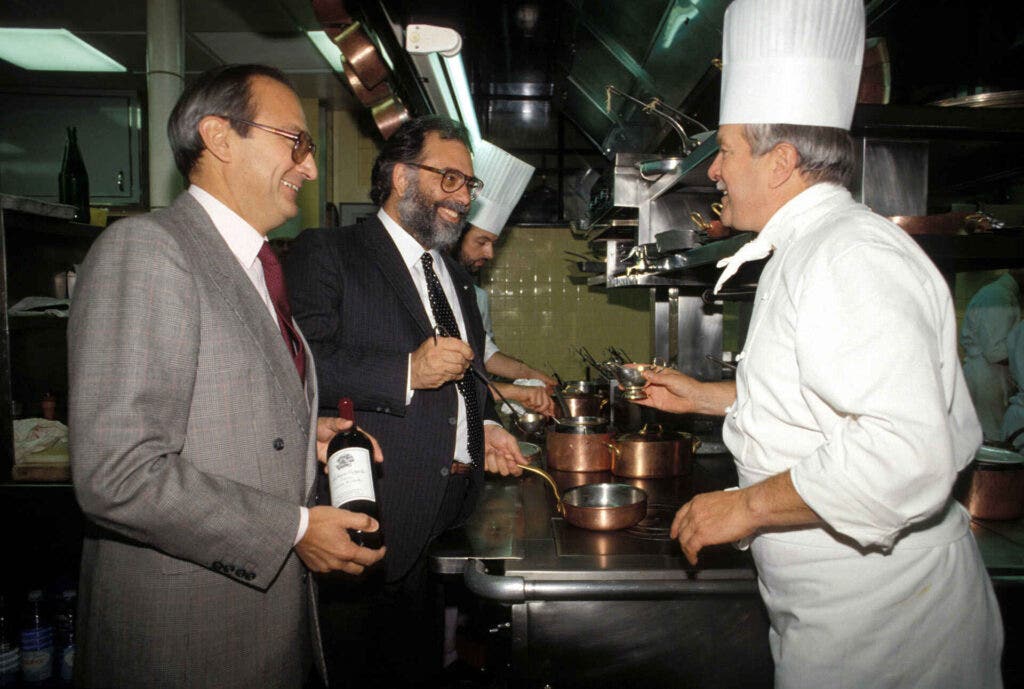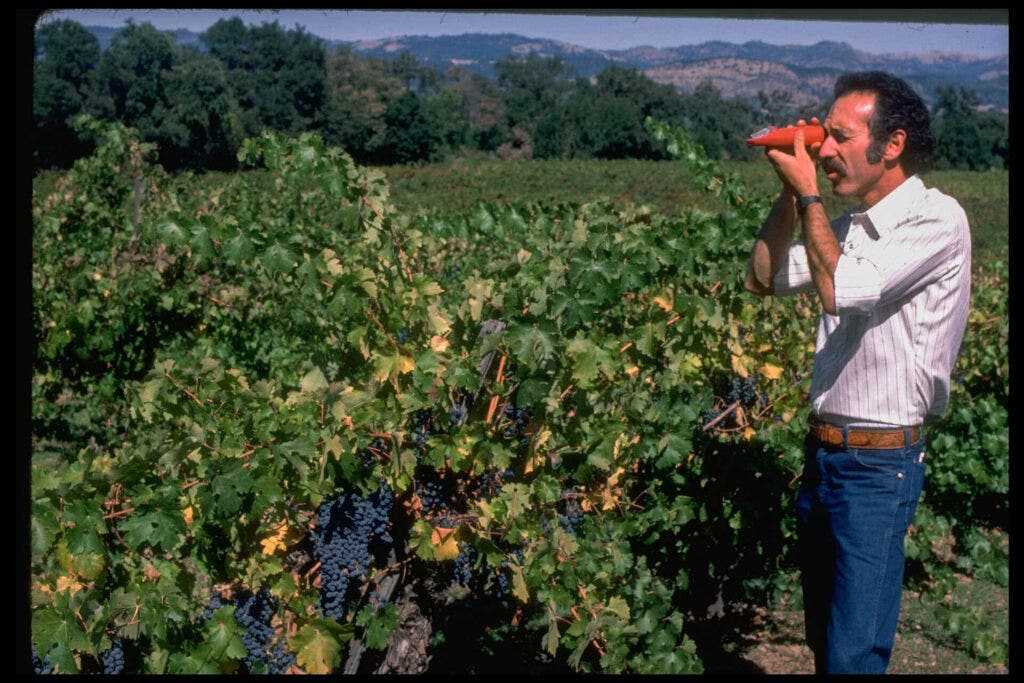St. Helena, California, was already the center of Napa Valley winemaking when I moved there in the last week of 1979 to take a newspaper job. But you wouldn’t have known it, taking a close look at Main Street where the St. Helena Star, my new employer, had its reporters banging out their news stories on manual typewriters.
A dive hotel that charged $30 a night stood across the street, waiting to be transformed into a luxury B&B. A Western Auto store sold motor oil and head gaskets nearby, waiting to become a women’s fashion boutique, and the meeting hall of the Native Sons of the Golden West three blocks away was the hottest theatrical venue.
This Napa Valley hamlet of 3,000 looked like Anytown, USA, at the beginning of the 1980s. But it was already undergoing a transformation that would make the word “Napa” mean something other than auto parts. It would make the 30-mile-long valley a playground for affluent Americans discovering the pleasures of good wine and the lifestyle that Napa wineries attached to it.
The transformation gelled around a French grape variety of the genus and species Vitis vinifera that is now a household word—Cabernet Sauvignon. A native of Bordeaux, Cabernet Sauvignon was not new to the Napa Valley, nor was winemaking. The monuments to the valley’s first boom period in the 1880s still stand impressively along Highway 29— the wineries of Trefethen, Inglenook, Charles Krug and Beringer, to name a few.
Great Cabernet Sauvignon wines from the 1930s through ’60s and a few from pre-Prohibition still rested in winery cellars. I got to taste some of them through my newspaper job and at subsequent magazine roles from the mid-’80s on. But the existence of wonderful Cabernets like the Beaulieu Vineyard Private Reserve 1968 and Heitz Cellar’s Martha’s Vineyard 1974 were known to very few people in the 1980s.
The Judgment

How Napa Valley Cabernet Sauvignon became “Napa Cab” by the 1990s is a story of agricultural science, winemaking technology, inspired marketing and two events of tremendous luck—one very good and one very, very bad, at least at first.
The “Judgment of Paris” event in 1976 first brought the world’s attention to California Cabernet Sauvignon and Chardonnay when Time magazine reported on an unprecedented blind tasting by French wine professionals. The French experts favored U.S. wines over pedigreed Bordeaux and Burgundy wines, stunning—and embarrassing— the judges and handing a few Napa wineries several decades worth of marketing gold.
The glow of prestige spread quickly and was a big factor in encouraging investment in Napa wine properties in the late 1970s by American entrepreneurs, French wineries like Moët & Chandon, movie directors like Francis Ford Coppola, even beverage behemoth Coca-Cola, which bought Sterling Vineyards near Calistoga.
A National Geographic feature story in 1979, “Napa, Valley of the Vine,” celebrated the burgeoning wine country lifestyle so convincingly that people who didn’t make wine wanted to live in Napa Valley, too, including the author and the photographer, who both moved there.
Restaurants in New York, the hub for wine imports and very Eurocentric in wine preferences, warmed to California wines. “By the mid 1980s, the acceptance was everywhere,” recalls Kevin Zraly, founding sommelier and wine buyer at Windows on the World restaurant in the World Trade Center. After a visit to the Monterey Wine Festival in 1978, “I came immediately back to New York and redid the wine list at Windows, where it had been 90% French but after that it was 60% French and 40% other stuff—but mostly California.”
Other NYC restaurants became equally passionate. The Four Seasons, home of the power lunch, ran a California Barrel Tasting event. Sparks Steak House built an impressive list of Napa Cabernets. Smith & Wollensky steak house amassed an exclusively American wine list with Zraly’s help. “These places picked up and actively promoted California Cabernet,” he says.
The Napa Valley Vintners Association, which had organized in 1944, did its utmost to keep the marketing ball rolling. With dynamo Robert Mondavi often leading the way, its members increasingly welcomed visitors to the valley and encouraged the development of restaurants and lodging, like Meadowood Resort. Top chefs and destination restaurants were scarce in the valley before Domaine Chandon’s restaurant opened in 1977, the French Laundry in 1978 and Mustard’s Grill in 1983.
The creation of the Napa Valley Wine Auction in 1981 by the vintners group was instrumental in keeping the spotlight on collectible Napa Cabernet Sauvignons while also becoming a juggernaut fundraiser for community charities, spreading goodwill among national and international bidders as well as local nonprofits and the hospitality industry.
While the auction may have helped raise Napa Cabernet prices in the 1980s, the biggest price increases came much later. By the time Opus One released its ’89 vintage the price was $63 and ’89 Beaulieu Private Reserve was just $40. These numbers look quaint compared to the current Opus One vintage at $390 and the Beaulieu at $150.
Growing Reputation
Napa Valley began the 1980s with roughly 60 wineries and finished them with perhaps 200. Winemakers had a growing supply of grapes at their disposal, but they were a hodgepodge of Zinfandel, Petite Sirah, Napa Gamay, Riesling and Chenin Blanc along with Cabernet Sauvignon, Chardonnay, Merlot and Pinot Noir.
The Cabernet Sauvignon crop totaled 15,681 tons in 1979, accounting for 21.5% of grapes harvested, according to the California Grape Crush Report. It grew to 26,886 tons of Cabernet Sauvignon in 1989, but Chardonnay topped that with 38,802 tons. Chardonnay’s lead would not last long, however. Most Cabernet vines then didn’t look like today’s. They were either not on a trellis or on a quite primitive one. Vigorous shoot and leaf growth often shaded the grape clusters too much and left them to ripen slowly and unevenly.

Viticultural operations were primitive, too, says Cathy Corison, who became the winemaker for collectible Cabernet producer Chappellet Vineyard at age 26 in 1980. “In the early ’80s, viticulture was comprised of two operations. They pruned it and they picked it.” None of the shoot positioning, leaf pulling, cluster thinning and other practices common today.
Still, despite growers’ naivete, Napa Valley was meant for Cabernet Sauvignon grapes, which need plenty of heat and a long growing season. Corison, who started her own Corison winery in 1987, says, “I think Cabernet here had always been very special. I believe we can make Cabernet Sauvignon as well or better than anybody in the world, and it’s just a combination of great soils and the perfect climate for Cabernet.”
The Plague
The biggest threat in a generation for the valley’s grapes began to appear in the early ’80s: phylloxera. The vine pest, a tiny louse that chews the roots of grapevines and kills vines that lack resistance to it, had nearly destroyed European wine in a worldwide 19th century outbreak. No problems with phylloxera had arisen in California in decades, so growers were lulled into denial. By the late ’80s phylloxera was spreading throughout Napa Valley like wildfire. Vines that looked healthy in the spring withered and died before harvest. It was deadly to millions of grapevines, had no cure except removing and replanting with new vines and cost $1.25 billion according to one estimate.
Yet in the process of replanting, growers and winemakers collaborated to make sure that the new vineyards were better than the old. With 15 to 25 years of modern experience, they knew which grape varieties and which selections or clones were best suited to different parts of the valley to make truly outstanding wines.
They knew more about disease resistant rootstocks, about vine spacing, row spacing, trellis types, row direction and the benefits of miserly irrigation. Winemaker Daniel Baron, who had done his 1981 master’s thesis at the University of California, Davis, on Napa Valley’s various microclimates and their effects on Cabernet Sauvignon, calls the phylloxera plague a defining moment for the valley.
“Imagine that suddenly, we got to redo everything within a three-year span,” says Baron, former Dominus and Silver Oak winemaker who still practices his craft. “We took that fresh knowledge of understanding climate, understanding microclimate and where we should be growing Chardonnay and where we should be growing Cabernet. That was a super powerful change.”
One dramatic difference was that most acreage from Yountville through Oakville, Rutherford, St. Helena and Calistoga was replanted with Cabernet Sauvignon and other Bordeaux varieties, not Chenin Blanc and Zinfandel.
Crowning Achievement

It wasn’t just better vineyard planting and planning that helped move Napa Cabernet quality forward. “Coming out of Davis, many of us were still acidifying wine to target pHs and making wine more by recipe than by taste,” Baron says. “We were picking on the basis of juice chemistry. No one was walking vineyards and tasting fruit. No one had ever conceived of that.”
Important changes were introduced in fruit handling. Grapes had been routinely delivered in multi-ton “gondola” trailers where the fruit unfortunately juiced itself and sometimes began fermenting before reaching the winery. Smaller containers were introduced to improve that.
Corison recalls, “Equipment got crazy better while I was at Chappellet. I used to call our stemmer-crusher the Waring blender, but then there started to be much gentler crushers available from Europe. As the technology evolved, mostly in the ’80s, that was huge for wine quality.”
On Main Street in St. Helena, the Star newspaper went from typewriters to word processors to computers during the 1980s. Fine dining restaurant Rose et LeFavour opened and the dive hotel got a nouveau Victorian makeover.
Nationally, the influence of wine writers grew steadily. Wine Enthusiast magazine debuted in 1988 and joined other well-known media outlets in celebrating the increasingly flavorful and full-bodied Cabernet Sauvignons of Napa and of Bordeaux, too. Winemakers like Corison and Baron never made monster Cabs, but they don’t speak ill of those who did.
For Baron, the vintage that finally reaped the labors of the ’80s was 1997. “We had a hot year with a moderate crop, and everybody could get their fruit as ripe as they wanted,” he says. “So, they got it super ripe and they got lots of accolades for these thick, jammy wines. To me, the goal of winemaking should be capturing fresh fruit, not jam or raisiny flavors. But you know what? God bless them. If that’s what people want to drink, that’s fine.”
But that’s another story and another decade.
This article originally appeared in the May 2023 issue of Wine Enthusiast magazine. Click here to subscribe today!
Last Updated: June 6, 2023



















